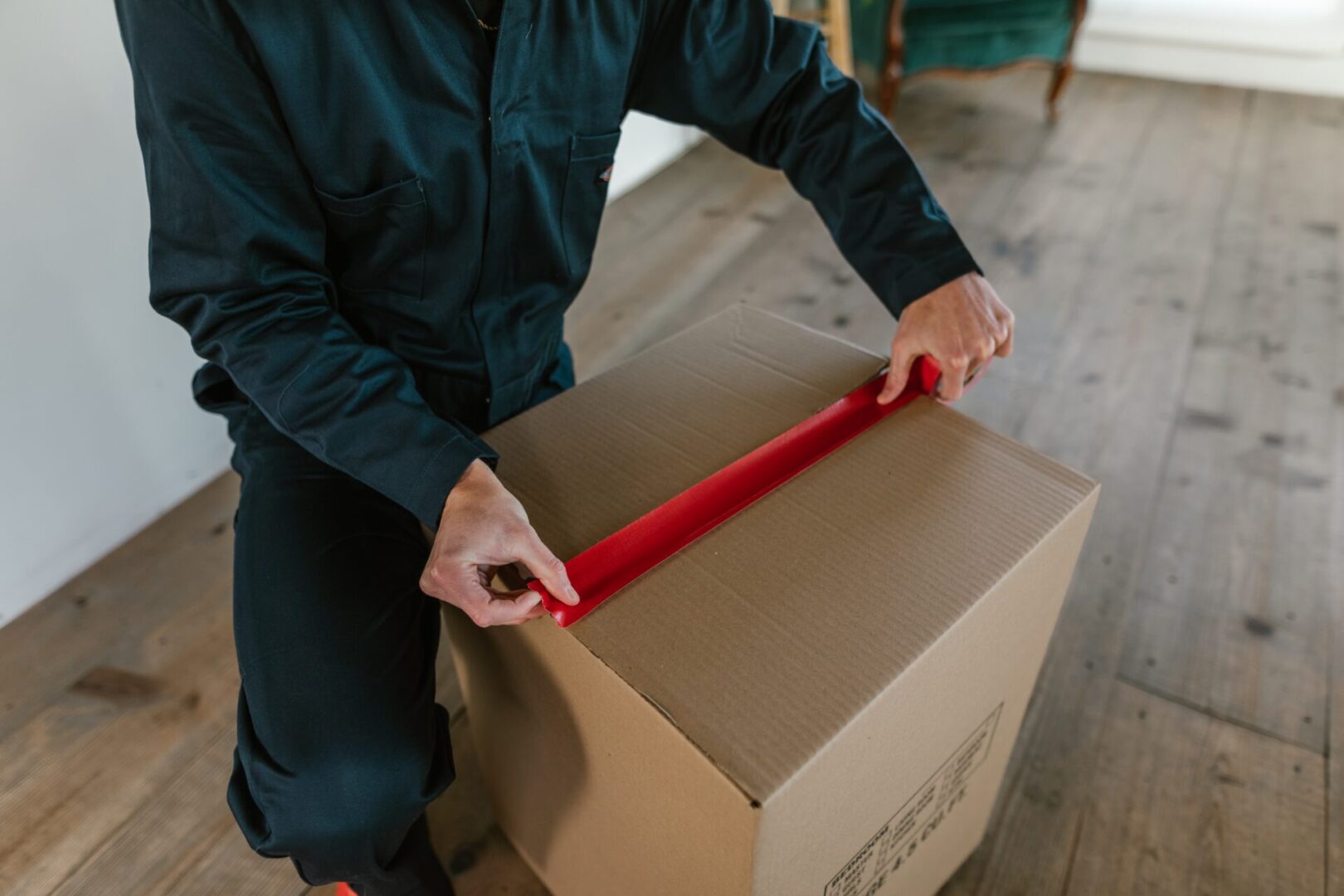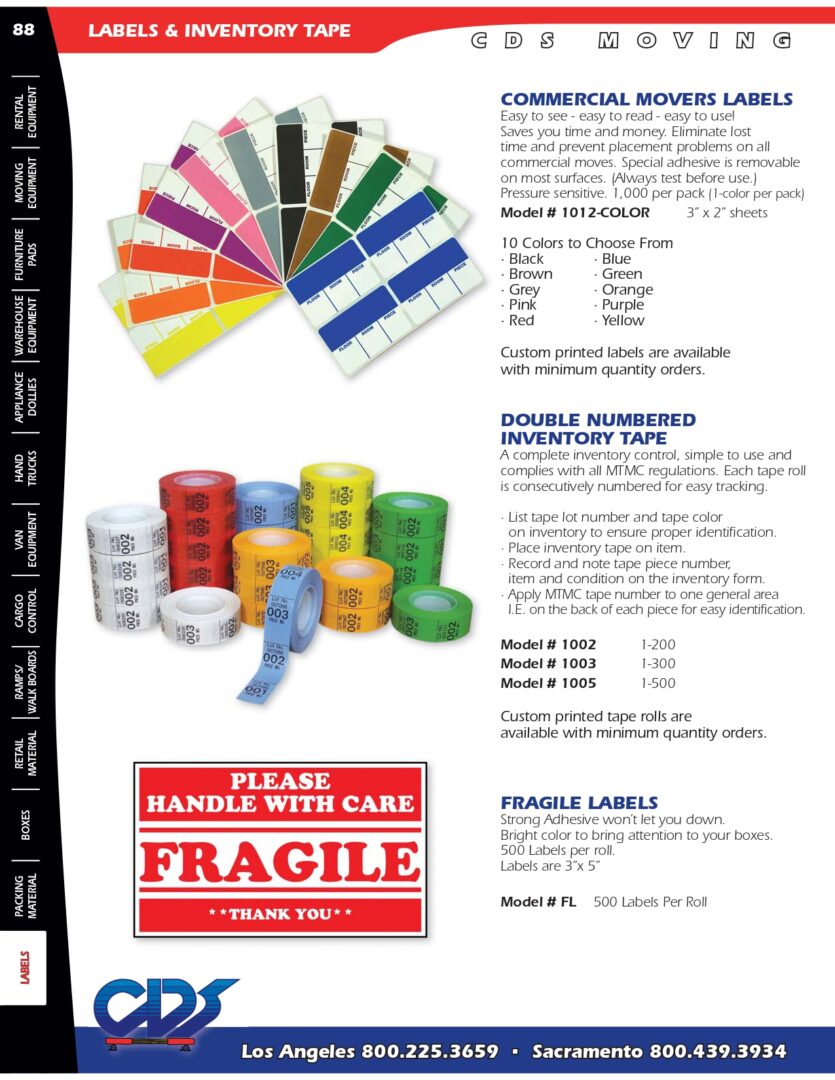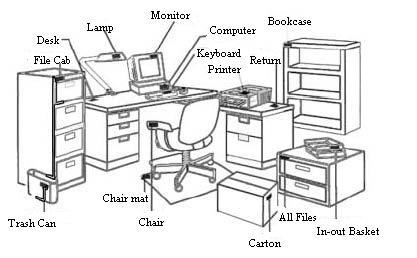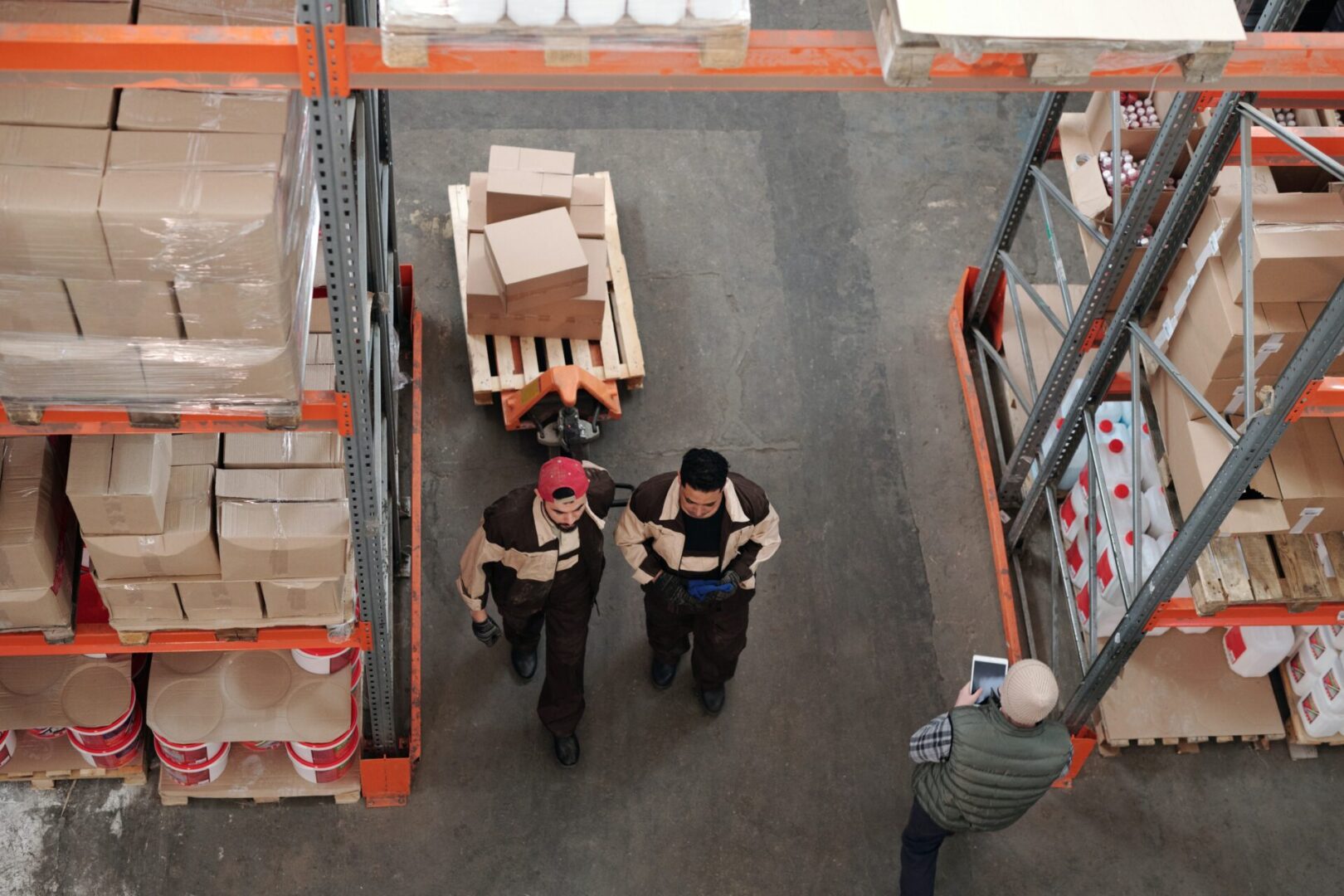Corporate Relocation Planning Guide
Getting Ready To Go
This packing guide will provide you with step-by-step instructions on how to pack for your move, including:
• House Cleaning
• Packing Up
• Labeling
• Protecting Your Personal Belongings
• Final Checklist

House Cleaning
If you haven’t already done so, a little house cleaning will be good.
You know, all those extra files, material, and “stuff”
that just seem to accumulate over the years.
Toss out items that are not needed any more, such as:
-
Old Phone Books
-
Outdated Catalogs, Directories, and Manuals
-
Unneeded Files
-
Old Magazines
-
Equipment That Is Not Worth Repairing
-
Trash
Return items that you may have borrowed from other departments or people, including:
-
Books/Manuals
-
Files
-
Furniture or Equipment
-
Plants
Set aside items for storage, repair, or other handling:
-
Files and Records for Storage
-
Broken Equipment Requiring Repair
-
Surplus Items That You Won’t Need in Your New Office or Work Area
Check things out:
-
Make a list of special requirements and give it to your Move Coordinator.
-
Check the condition of your furniture and equipment for any pre-existing damage.
Packing
Packing can be fun, especially if you do it with a neighbor at an adjoining desk. It makes the task easier and conserves cartons and materials.
Desks and Credenzas
-
Place small items, such as pens, pencils, paper clips, etc., in envelopes and place in moving boxes.
-
If you have a glass desktop, remove anything between it and the desk (i.e. photos, notes, etc.).
-
Pack letter trays, books, magazines and loose files and papers in cartons.
-
Carefully pack all desk clocks, bookends, calendars, etc.

Bookcases
-
Remove all books and pack in book carton.
-
If shelves are removable, leave them in place but make sure that they are labeled, as discussed in the next session.
Vertical Files
-
Leave contents in the files
-
Lock cabinets and keep keys in a safe place. If keys are lost, wrap tape around lock cylinders to prevent accidental locking.
Lateral Files
-
Lateral files need to be packed into cartons. Your Move Coordinator will tell you whether you need to pack these files or if the moving company will handle it.
Pictures, Maps, and Posters
-
Wrap and pack small pictures.
Supply Cabinets
-
Empty supply cabinets and pack contents into cartons.

Labeling
Each piece of furniture must be labeled with a color-coded tag specifically assigned to your work area. Items not properly labeled may be left where they are.
You will be given a supply of labels for your area and identification codes for floor and room locations.
-
Start by clearly printing your identification codes on your labels.
-
Use a dark color marker to print large, legible numbers or letters.
-
Affix labels to each piece of furniture, equipment, and carton as illustrated.
-
If the self-adhesive label does not adhere to a particular surface, affix with clear tape.
-
As you label each item, record the item on your personal inventory list.
Some items, such as drafting tables and bookcases, may be taken apart before moving. Make sure all parts are tagged with corresponding consecutive numbers.
If file cabinets are to be set up in a particular sequence, be sure labels are numbered consecutively.
Label everything! Don’t forget artwork, pictures, wastebasket, floor pads, lamps, etc.
Labeling Instructions
- Place labels where they are easily visible.
- Write on labels in large print, black markers
- Do not put names on labels; only numbers and letters
- Make an inventory of your office area. List all items you have
- If it is to be moved, it must have a label.
- Computers are to have multiple labels as follows:
- Monitor
- Keyboard
- Mouse
- Tower
- Printer
This allows the mover to ensure all items associated with the computer are kept together.

Handling Your Personal Items
You are responsible for safeguarding your personal possessions. Gather up all personal items, including:
-
Photos
-
Coffee Cups
-
Mementos
-
Plans

Do not leave money, jewelry, watches, or other personal items on your desk or cabinet!
As you label each item, list on this inventory form. Check off items as you unpack at the new location.
Final Checklist
-
Desk Empty
-
Supply Cabinets Cleared
-
File Drawer Locked
-
Wall Items Taken Down
-
Breakable Items Properly Packed
-
Typewriter Carriages Centered
-
Typewriters, Computers, and Other Machines Disconnected
-
Liquids Drained From Equipment
-
Loose Casters Removed
-
Desk Pads and Chair Pads Tagged
-
Everything Else Tagged and Marked
-
Condition of Furniture and Equipment Carefully Checked
-
Personal Items Gathered Up and Ready To Take Home
And just so you're aware:
Movers will move any items with a label and place at destination according to the room setup drawing. Be sure to be as accurate as possible on your drawing.
Movers will be using carts to transport computers, printers, and large items that are of unusual shape.
Please note any damage and inform your move co-coordinator of such. Do not contact the mover directly. We have a process for claims and will follow up on all damaged item reports.
If a fine tune crew is scheduled for your move, movers will stop by each station to assist in moving items to their correct position. Please do not ask movers to come to your work area. We will be sure to check on everyone in a timely and efficient manner.
All requests for extra work must be in writing and submitted to your move co-coordinator for approval prior to work being completed.
Fold your boxes and return to move co-coordinator at end of move.
If using crates, please stack crates with lids open and one crate into another 20 crates high. Leave one set of wheels on bottom for easy removal. The movers will return on a specified date to pick up crates.